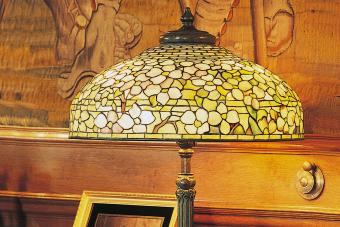
The subject of antique wooden chairs encompasses a vast array of styles, shapes and designs that spans centuries of workmanship throughout several continents. Since such a vast and varied subject cannot be covered in one article, this article explores the question of when a wooden chair is considered an antique and American wooden chair styles from the Victorian era.
When Is a Wooden Chair an Antique?
For decades people involved in the field of antiques have disagreed on how old a piece of furniture has to be for it to be considered an antique. For many people, the year a chair was made is not the defining factor of whether or not it is an antique. The age is considered a subjective matter. Generally, a piece of furniture is loosely defined as being an antique if it has special value due to its age. This is especially true for furniture pieces that have embellishments or elements illustrating various types of fine artistry.
According to the United States government, an antique must be at least 100 years old. Have you ever wondered where that time frame originated? It is from the United States Smoot-Hawley Tariff Act of 1930. In the Tariff Act antiques were defined as ornamental objects or works of art produced before 1830. The originators of the Tariff Act did not choose the year 1830 because it was 100 years before the Tariff Act was written. They chose it because it was the beginning of mas produced, machine-made items in the United States. Prior to 1830 furniture and other objects were crafted by hand.
Yet there are a number of other viewpoints of when a wooden chair is considered an antique, for instance:
- Dealers of fine antiques consider pieces to be antique when they are 150 years old or older.
- General antique dealers and shop owners consider items to be antique when they are 50 years old or older.
- Demographically people from the West may tell you that if a piece of furniture came to the West in a covered wagon, it is an antique. People living in the southern states often gauge the age of antiques by the year the Civil War began. Some easterners may say that an antique is Queen Anne or earlier while others might say Victorian or before.
In reality, most of the antique chairs in the general marketplace today are from the mid 1800s to the mid 1900s. Often older wooden chairs are available at fine antique stores and auctions.
Antique Wooden Chairs of the Victorian Era
Furniture made during the reign of Queen Victoria, 1837-1901, is called Victorian Era. Pieces made during these years include both hand-crafted and mass-produced pieces. Hand-crafted pieces were made in small furniture shops by designers of the time that include:
- John Henry Belter
- R.J. Horner
- George Hunzinger
- Alexander Roux
- Allen and Brother
- Merklen Brothers
- Herter Brothers
- Charles Eastlake
Although many of the craftsmen did not sign or put a stamp or label on their works, some did. For example, George Hunzinger typically put a stamp or label on all of his furniture, such as this exquisite 1870 wooden armchair by George Hunzinger. The unusual chair has design elements of both the Moorish and Renaissance revival.
During the Victorian era many different wooden chair types and styles emerged. While walnut was commonly used on most chairs, rosewood was favored for high end chairs. Several of the more popular chair styles of the Victorian era include revival styles of earlier times. These include:
- Gothic - circa 1830 -1860
- Victorian Rocco or Louis XV - circa 1840 -1865
- Victorian Jacobean - circa 1870s
- Renaissance Victorian and Louis XVI - circa 1860 -1890
- Eastlake - circa 1880-1900
- Aesthetic Movement - circa 1180-1900
Additional wooden chair styles popular during the Victorian era include:
- Hitchcock chair
- Morris chair
- Bentwood chair
- Platform rocker
- Track rocker
- Sleepy Hollow rocker
- Lincoln rocker
Jenny Lind Furniture
Named after a famous opera singer of the times, circa 1850-1865, mass-produced spool turned furniture was called Jenny Lind. The word "spool" refers to the turning of a straight piece of wood creating a look resembling a row of sewing machine spools. Bonny Neiman Antiques offers a Jenny Lind walnut corner spool chair. Jenny Lind chairs were usually made of birch or maple. They were generally stained or painted a dark color to resemble black walnut and rosewood.
As the 1800s drew to a close, the styles of antique wooden chairs of the Victorian era were replaced with chair designs of the Arts and Crafts Movement including stylized Art Nouveau chairs, the simple style of wooden Mission chairs and the clean lines of wood chairs made by L & LG Stickley.







